Starcraft 2's new multiplayer beta blows HotS and cold
The biggest eSport gets added bells with Heart of the Swarm, but is that enough?
If there's one thing a beta never lacks, it's disclaimers. Everything's subject to change! This is not indicative of the finished product! Everyone plays along, rightly acknowledging that there is the scope for big changes, but we know that this is fundamentally it: in Heart of the Swarm's case, the next iteration of Starcraft 2 multiplayer nestling comfortably into your PC. Things will change, but more will stay the same.
Heart of the Swarm is the second Starcraft 2 game, themed around the Zerg race, and following on from the Terran love-in that was 2010's Wings of Liberty. Despite being largely the same game as Wings of Liberty, HotS comes with its own full single-player campaign (which we've already previewed), and the big selling point is the new multiplayer units, additions to one of the biggest competitive games on the planet. These have been trailed at Blizzcon and the like, but the beta's the first chance we've had to get hands on them.
The biggest impression is made by the Zerg's Swarm Host, a burrowing monster that can be built by the midgame. They're effectively a siege unit - get them into position, dig them in, and they'll constantly spew out vicious little Locusts in whichever direction you please. These locusts don't have much range, but move fast and do devastating damage, as well as taking much punishment and being constantly replenished. Fighting against Swarm Hosts, especially when they're sunk-in and protected by other Zerg units, is the organic equivalent of rushing into a line of Siege Tanks - you lose everything, they lose almost nothing.

They're a great addition to the Zerg's arsenal, which has never really had a way to hold a position or put a base under bombardment before. The other major addition, the Viper, makes this even better - a long, thin insectoid flying unit that specialises in messing up enemy defences. Its funniest-looking ability is Abduct, which yoinks an enemy unit over to its position - but it's not funny when your Colossi are being pulled into a crowd of Zerg units. Equally awesome is the Blinding Cloud, which reduces the range of everything under it to a single digit (i.e. melee range), and is perfect for rushing into clumped-up siege tanks.
Certain other Zerg units get a tweaking - The Ultralisk gains a useful burrow-then-charge ability that lets it get in the mixer without taking damage, a really neat twist to entrenched late-game battles against Terran tank lines. Hydralisks are now faster, though this doesn't mean that anyone's been building them. It's rather sad that the Hydralisk, the poster-boy monster for much of Starcraft's history, has never really found a role in Wings of Liberty, and it looks like Heart of the Swarm needs much more than a speed buff to tempt Zerg players. Judging from their complete absence in my beta games, things still aren't right.
Still, and perhaps appropriately enough, the Zerg definitely seem to get the best of Heart of the Swarm. The Protoss come out of it pretty well, too. Their new units add much-needed raiding capabilities in the form of the Oracle, which you often see encasing enemy mineral fields with little blue shields - these can be broken by attacking, but it's a real pain, and the ship moves fast enough to get away most times. It also has a detection/scanning ability called Revelation, which means Protoss don't necessarily have to build a Robotics Facility just to get Observers out. A new capital ship, the Tempest, further strengthens Stargate tech - offering huge range and bonus damage against massive units, it's a way to push back entrenched defenses and sometimes deal big damage.
Even better for our tech boffin chums is the Mothership Core, which acts as a sturdy early-game defence against rushes and unlocks the previously late-game Recall ability. This lets a Protoss warp all of his units immediately to the Core, meaning they can get deep in enemy territory and do damage before popping back home to regenerate shields. It also leaves your opponent's incoming army look incredibly foolish. This is another great tool, though the high-energy cost and the fact the Core has other useful abilities - teleporting to other Nexii, energising other units - means you don't see it a huge amount.

By some way the problem child for Heart of the Swarm is the mighty Terran race. The big change in focus for the Terran army in Heart of the Swarm is clearly intended to be the mechs - hulking great vehicles constructed from the Factory building. In Wings of Liberty the Factory's role is to produce either a sprinkling of metal backbone for your brave troops, or a devastating entirely mechanical force that moves like a sloth and can be easily circumvented by cunning opponents.
Heart of the Swarm had a big solution to these extremes that has subsequently disappeared: the Warhound. This was an armoured and fast-moving bipedal mech with a lot of health, good damage with a high rate of fire, and 'Haywire' missiles that dealt extra damage to other mechanical units. The Warhound was supposed to be the footsoldier of a Terran mech army, capable of giving and receiving heavy punishment but also getting around the map.
The problem was that the Warhound was a bit too good. The unit was in the very earliest weeks of the beta and has subsequently been removed following a Warhound-making frenzy from the Terran playerbase. The go-to tactic, in every match-up, became 'build Warhounds, attack-move towards opponent base'. Early pro matches on HotS also showed this tendency, with few players able to cope with the unit's offensive power in the early-game. So now it's gone, and according to Blizzard never to return. So long Warhound: it was beautiful.
Losing the main attraction leaves the Terrans the most under-served race in HotS, with Battle Hellions and Widow Mines the only major additions (an earlier concept, the Shredder, didn't make the beta's first phase). The first isn't even a proper new unit, but a transformation of the Hellion unlocked as an upgrade. A Hellion is basically an RC car with a flamethrower on top of it, designed to race into an enemy base and toast the workers, before hot-wheeling it out of there - very fast, very light and not much use in a stand-up fight. But beyond a certain stage in a Starcraft 2 game, raiding workers becomes much less of a priority.

Hence the Battle Hellion, designed to literally transform an early-game raiding unit into a beefier late-game damage-dealer. The animation of this is gorgeous, even for Blizzard, as the Hellion becomes a walking Autobot with arm-installed flamethrowers. These deal damage in a wide sweep rather than a long straight line, but don't reach quite as far - and Brood War fans will recognise something of a return for the Flamebat.
It's easy to be sniffy about the Battle Hellion at first, but it is significantly different from the car form. The biggest thing is that it can take some damage, absorbing the first shots and letting a much more fragile force come up behind it. But in terms of damage dealing, in the right situation it's unstoppable. Some Protoss build towards a very Zealot-heavy composition, and Battle Hellions buffering the bio from the first charge can deal devastating damage - I had around a dozen against 20 to 30 Zealots, normally a tanking unit, who just disappeared in the blue flames.
The Widow Mine is also new, and harder to get excited about. It's a suicide unit that makes up for its low cost and fast building time by taking up two army supply (quite an investment), and then being stuck in one place for the rest of the game - you burrow them, and if an enemy unit walks by they pop up and deal big damage to one target plus splash to others. I'm a bit crap with these, to be honest, and usually end up obliterating a scouting SCV rather than an incoming army. There are plenty of HotS games on YouTube where big, big damage is dealt by Widow Mines, but just as many where they're a waste of resources. With these, we'll have to wait and see.
Most of my games in the beta have been as Terran, and despite building and trying to use the new units the tactics remain virtually unchanged. Zerg are using Swarm Hosts an awful lot, but your answer still involves the same unit composition of marine/siege tank it's always been. The matchup against Protoss seems ideal for Widow Mines, but if you get 'em in the wrong place you're left with a meagre army at home and useless explosives halfway across the map. The Battle Hellion does prove useful in both encounters, but it's not exactly something you build an army around.

As a Terran junkie one can't help but feel a little underwhelmed by what Heart of the Swarm offers, but perhaps players of the other races will feel differently. Regardless, you have to feel some sympathy for Starcraft II's development team, stuck between a rock and a hard place. Wings of Liberty is post-WoW Blizzard's biggest success story, first winning and then sustaining one of the biggest eSport audiences on the planet, perhaps the biggest. The episodic structure has its advantages - a nice bump in publicity, the opportunity for changes bigger than a single patch, plus community engagement. But it also demands that the developers make substantial changes to a mostly winning formula in order to justify the cost of admission.
This is an especially hard task with the Starcraft 2 community, which remains (and not always without good reason) somewhat fixated on history. Brood War, the very reason for Starcraft 2 being developed from day one as an eSport, will always be Wings of Liberty's biggest albatross. And so what you end up with are these compromises, like the Battle Hellion, which has its own characteristics but also fundamentally restores the much-lamented Firebat's functionality. That's not to say the Battle Hellion is a bad unit, but you do wonder how much influence the tail had on the dog.
There's an underwhelming quality to Heart of the Swarm's beta, in other words, that has little to do with its quality as a game. I've played Starcraft 2 regularly since its release, month after month, because it's an amazing multiplayer experience - and Heart of the Swarm is this with bells on. Is it going to be different enough to warrant another £40? You could reel off stuff like the single-player, the new frontend, the fact that everything's subject to change - but with this particular game, it's kind of a moot point. I'll get it on the day of release anyway, just like every other Starcraft fan. That doesn't mean, of course, we have to like it.
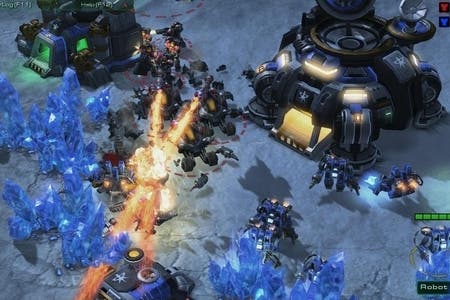

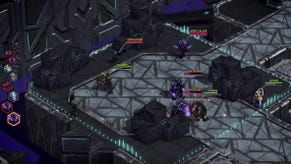

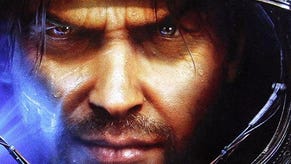
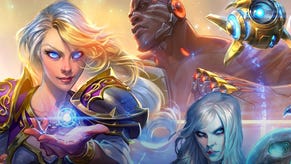
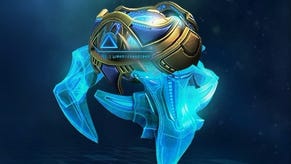






.png?width=291&height=164&fit=crop&quality=80&format=jpg&auto=webp)



